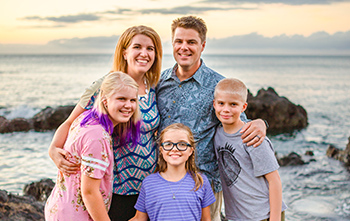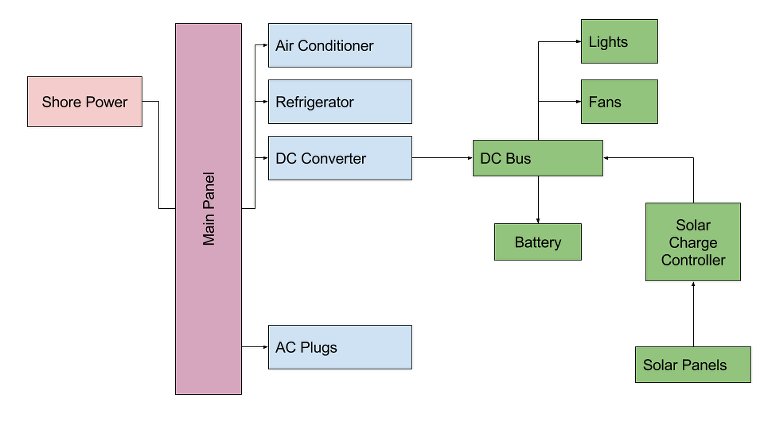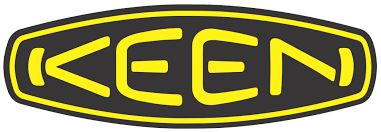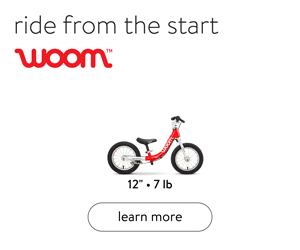
We have one rule in this house. Okay, we have more than one rule, but the MAIN rule for family adventuring is: ALWAYS pack snacks. It doesn’t even matter that we don’t have toddlers anymore, even older kids get hangry when their tummies are empty. And hangry kids are no fun to hike with. Or…




















Thanks for posting this information — might be very helpful down the road. Quick question: on your diagrams, you show the line from your solar controller going to the DC bus, and then to the battery. Wouldn’t that line go to the battery first, then to the DC bus? Otherwise, you be powering your lights and fans directly from the solar panels. Thanks again.
This surprised me as well during the install: The existing converter (battery charger) was also just wired to the DC Bus. But really, it does make sense. The battery doesn’t have different charging terminals than usage terminals, so connecting at the bus is nearly the same as connecting at the battery terminals themselves. Running only one set of wires from battery to Bus is actually much simpler as well, with only one set of connections to deal with at the battery.
That DOES mean that incoming solar power powers the lights and fans before charging the battery, but that is actually the desired behavior anyway. There is a loss involved charging the battery vs using the power immediately, causing immediate use to be better. The presence of the battery in the circuit means that the fluctuating voltage of the solar panels is smoothed into normal 12V ranges.
The battery will charge if the voltage on the DC Bus is higher than its internal voltage, and discharge if the voltage on the DC Bus is lower than it’s internal voltage. The Solar Panels (and also the Converter) charge the battery by raising the voltage on the Bus.
Does that make sense?
[…] Part IV – The Wire Panel Adding Bigger Batteries Installing a 2000 Watt Pure-sine Inverter Automatic Transfer Switches Cost […]